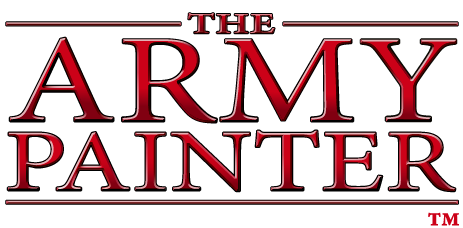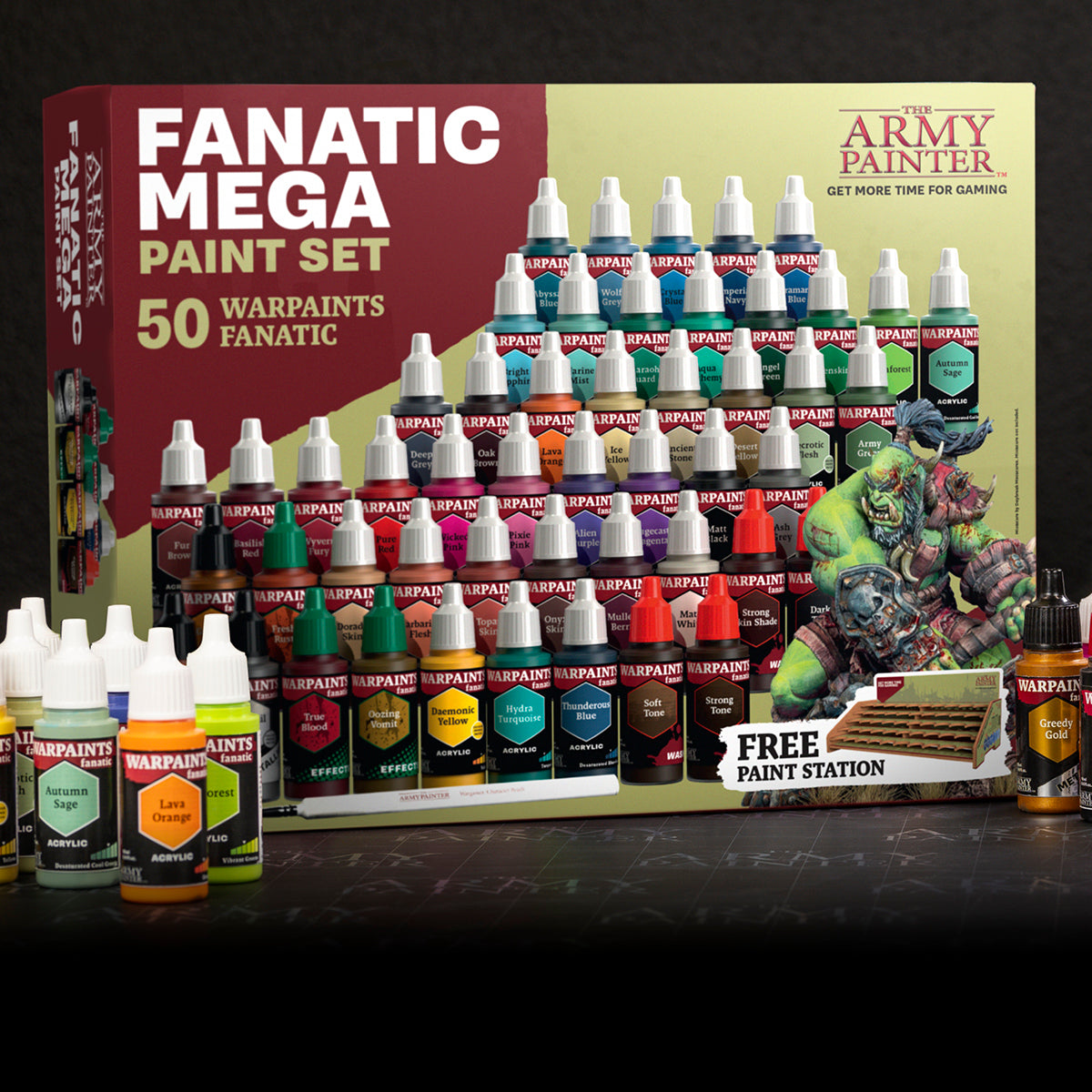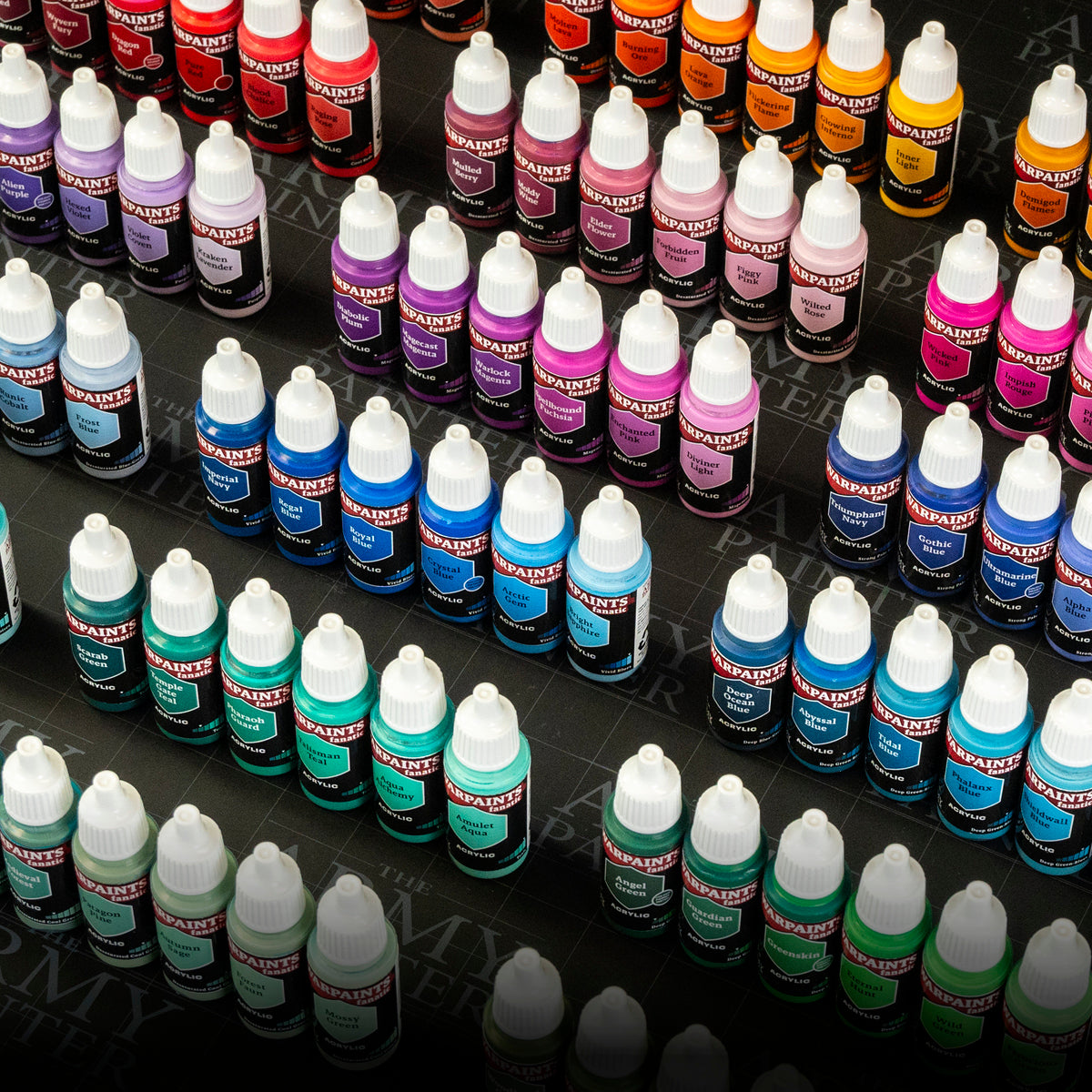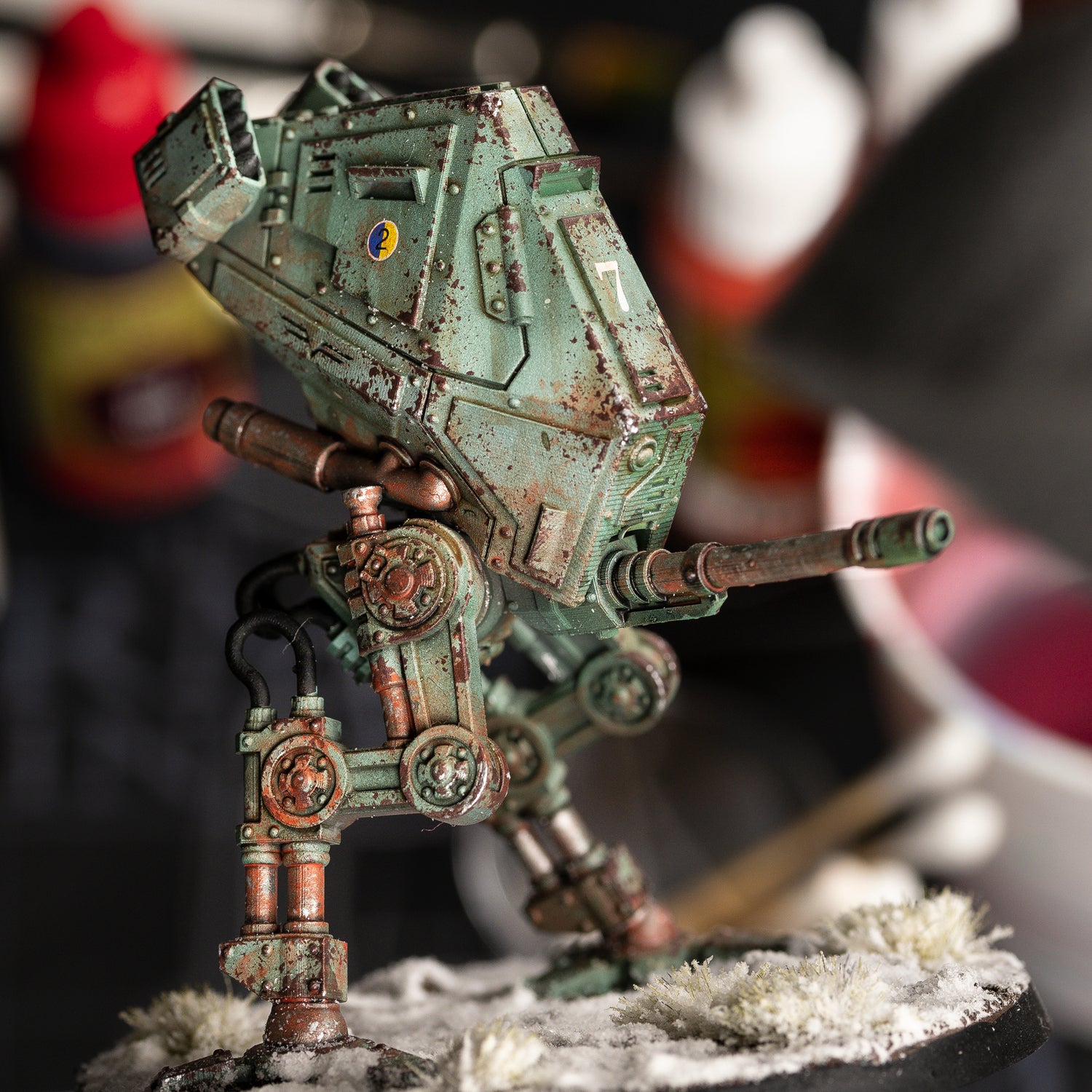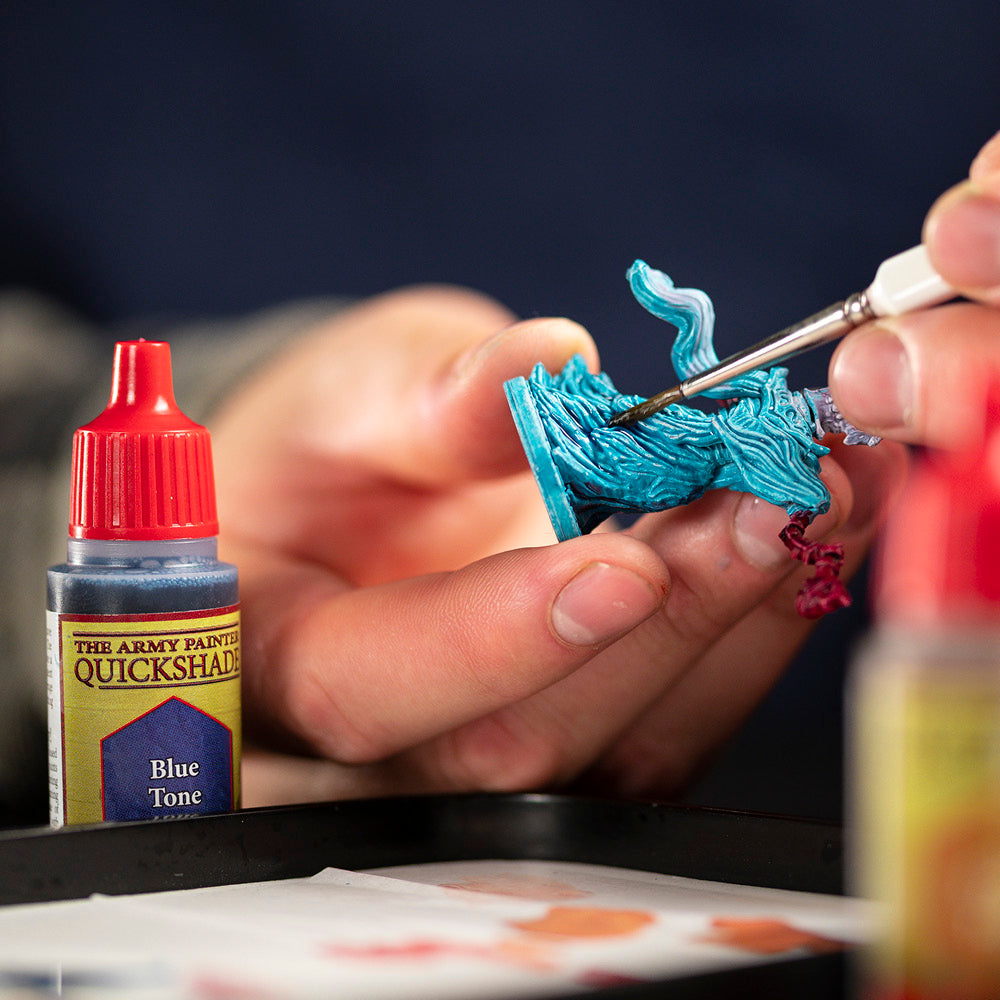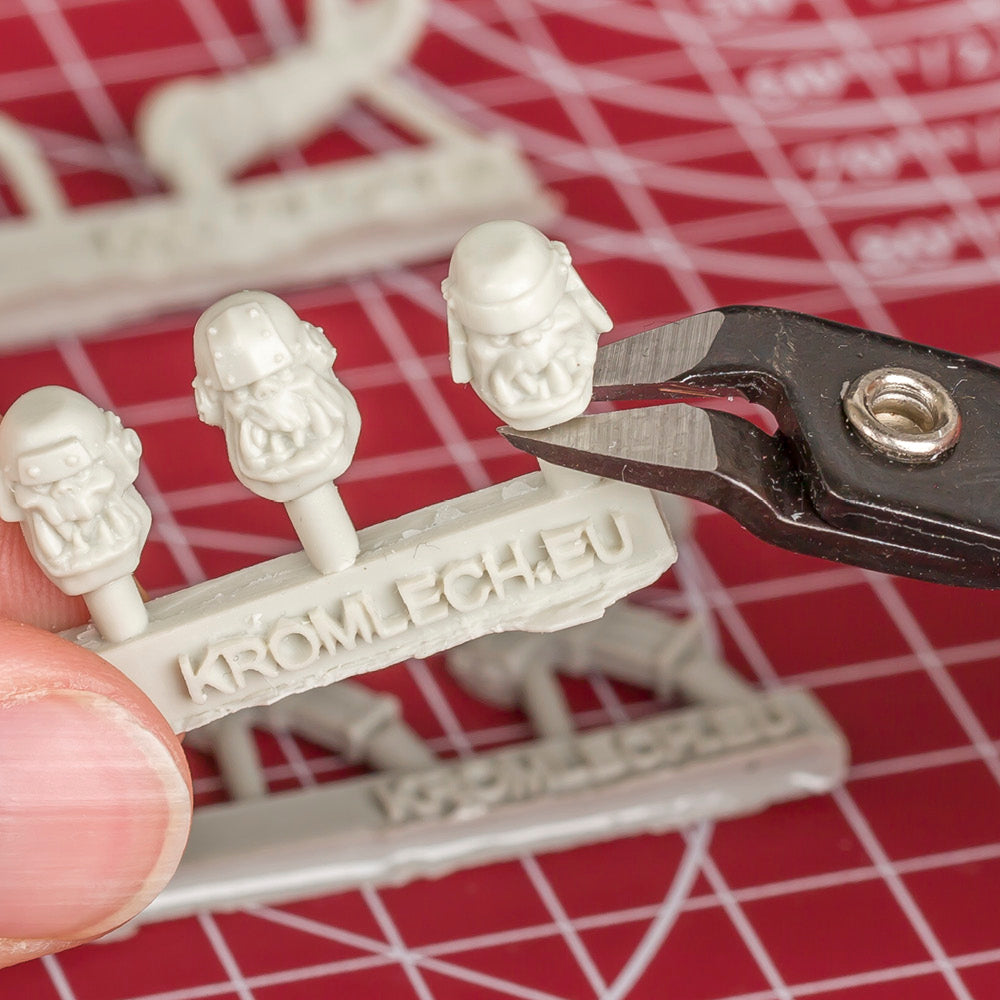What is Weathering?
Weathering refers to a series of techniques that simulate natural wear and tear, ageing, and exposure to the elements. From a rusted tank to a mud-splattered cloak, weathering can bring your miniatures to life, making them look as though they’ve been through battles, weathered storms, or stood the test of time.
It isn’t about making your miniature look “dirty” but adding a layer of realism and story and replicating the effects of time and environment on surfaces and materials.
Why Use Weathering Techniques?
Weathering techniques can significantly affect the finished model, contributing to its aesthetic appeal and narrative depth.
The primary effect of weathering is enhancing the realism of the model. By using the right techniques, your miniature can look more natural and like they’ve interacted with its environment, whether it’s a soldier’s armour showing battle wear or a vehicle sporting rust and oil stains.
Also, weathering can help convey the story or background of the miniature. For instance, battle-worn armour, a rusty vehicle, or a mud-splattered cloak can tell a story about where the miniature has been and what it has experienced. It can also help set the mood for the miniature. For example, heavy rust and corrosion can give a post-apocalyptic feel, while subtle wear can suggest a well-maintained but used piece of equipment.
3 Weathering Techniques
Weathering can be done in many ways using many different techniques.
Below, we’ll guide you through three weathering techniques that can help add realism to your army and make them come alive on the tabletop.
Weathering Technique: Rust

Add spots of Dark Rust Effects paint or Fresh Rust Effects paint to the metal. This can cover up any mistakes you are unhappy with and tie the whole miniature together nicely.
Remember that rust tends to form in the joints and bends of the metal and the exposed parts that get scraped a lot. By thinning the Rust Effects paints with Wash Medium, you can create a “Rust Wash” to help you achieve this effect.
Weathering Technique: Sponging

To create chipped metal, especially battle-worn armour, sponging is an easy way of getting a great result. You’ll need a sponge, and the finer, the better. Most kitchen sponges will do just fine.
The best result is using either a really light colour, like Brainmatter Beige, or a really dark colour, such as Oak Brown. Put some paint on your pallet, dip your sponge in the paint, then, like drybrushing, wipe most of it off again and carefully dab the sponge over the surface.
This method can also work as a model’s highlight layer, saving you a lot of time. For example, you can use a light silver over a dark metal to create the chipping effect, which also works as the highlight layer.
Weathering Technique: Streaking

Streaking is a great way to get some easy micro detailing on a weathered model. Streaks are usually rust-runners or dirt-runners on larger surfaces, and with army painting, it’s a good idea to find easy ways of creating good-looking details on your models.
The easiest way to make them is to use a watered-down Warpaints (Like Dark Rust Effects paint or Fresh Rust Effects paint) or Washes (Like Dark Tone or Dark Skin Shade). Make sure you take some time to think about how the streaks would run over a surface when the model is resting/standing still and not just in the current pose. This adds another level of realism to your models.
